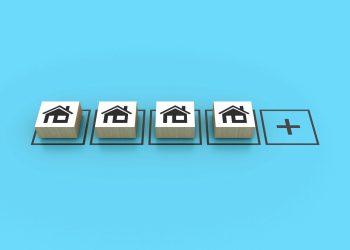(TNS)—Federal Housing Administration-backed home equity conversion mortgages, or HECMs, are accessible to homeowners 62 and older. These reverse mortgage loans allow older Americans to tap into a portion of their equity to help supplement retirement income.
With a reverse mortgage loan, homeowners aren’t required to make monthly mortgage payments, but do need to continue paying for property taxes, homeowners insurance, home maintenance costs and otherwise comply with the terms of the loan. Just like a conventional home mortgage loan, if the homeowner defaults on the loan, or doesn’t comply with the terms, the borrower may face foreclosure.
Here are seven of the most common reverse mortgage misconceptions.
1. Reverse mortgage loans are a scam.
Actually, today’s reverse mortgage loans are quite viable instruments and the FHA-insured HECM loans are safer than ever. These loans are unique because payment of the balance is deferred until the last eligible borrower or non-borrowing spouse leaves the home, and often the sale of the house is used to pay the loan balance.
A reverse mortgage loan is highly regulated, just like most financial products. To qualify:
• All borrowers must be 62 years or older.
• The home must be the borrower’s primary residence.
• The borrower must have enough equity in the home to qualify.
• The borrower must undergo a financial assessment to ensure capability and willingness to continue paying for property taxes, homeowners insurance and home maintenance.
2. A reverse mortgage loan is a loan of last resort.
Reverse mortgage loans used to be thought of as a last-ditch effort to get cash while retired. While many financial products are created for a single purpose, reverse mortgage loans are not “one size fits all.” Homeowners have the flexibility to use a reverse mortgage loan in several different ways, such as:
• Lump sum
• Monthly installments
• Line of credit
3. My spouse or I can be thrown out of the house when one of us dies.
With a HECM reverse mortgage loan, borrowers still retain ownership of the home as long as they continue to pay for home maintenance, property taxes and homeowners insurance, and meet the terms of the loan. As with any loan, including traditional mortgages, if the borrower does not comply with loan terms, such as paying for property taxes, then the property can be subject to foreclosure.
HECM reverse mortgage loans have safeguards that can help ensure that the borrower will be able to fulfill the loan terms for the life of the loan, including:
• Eligible non-borrowing spouses are allowed to remain in the home after the borrower of a HECM reverse mortgage loan passes away.
• The loan is non-recourse, meaning the lender cannot collect more than the value of the home and the home is the only asset that can be used as collateral.
• Prospective borrowers are required to undergo independent third-party reverse mortgage counseling to ensure they understand the fine print, what they can expect throughout the loan process, what their responsibilities are and what other options might be available.
• The FHA establishes caps on the amount of money that can be drawn during the first year of the loan to help ensure that proceeds last as long as a borrower needs them.
4. Reverse mortgage loans come with expensive fees and interest.
As with any conventional home mortgage loan, there are fees that vary depending on the value of the home, loan terms, market conditions and interest rates.
Interest rates and fees are calculated based on a number of factors, such as:
• The borrower’s age
• The home’s value
• The property’s ZIP code
• Any existing mortgage balance or liens
• Number of expected years in the house
• Life expectancy
A reverse mortgage professional can help determine what the exact interest rates and associated fees are and will disclose your interest rate and fees before the loan is finalized.
5. Your home has to be free and clear to qualify.
According to FHA, to be eligible for a HECM reverse mortgage loan, you either need to own your home outright or hold enough equity to pay off the balance with a reverse mortgage. The balance you are allowed to have may vary depending on the home’s value, borrower’s age, and the loan’s interest rate, among other factors.
One of the most important advantages of a reverse mortgage loan is the ability to pay off the existing mortgage and eliminate monthly mortgage payments. Paying off existing mortgages is also required as part of the reverse mortgage loan process.
6. The heirs will be responsible for paying back the loan.
When the last surviving borrower or non-borrowing spouse dies, an heir or the executor of the estate has the option to sell the property and use the proceeds to repay the loan. In this case, the remaining proceeds from the sale can be split among the heirs. The heirs also have the option to repay or refinance the loan and keep the home in the family.
An important feature of the loan is that because a reverse mortgage is a non-recourse loan, the home is the only collateral that the lender may access to pay off the loan balance. If the sale of the home does not cover the entire loan balance, then the FHA pays the difference.
7. The bank owns your home.
With a reverse mortgage, the borrower retains ownership and the loan is secured by a lien on the home. The borrower does not relinquish ownership using a reverse mortgage loan, but rather, borrows against the value of the home’s equity. As long as you maintain the home, pay property taxes and insurance and otherwise obey the loan’s terms, you continue to own your property.
©2017 Bankrate.com
Distributed by Tribune Content Agency, LLC
For the latest real estate news and trends, bookmark RISMedia.com.











